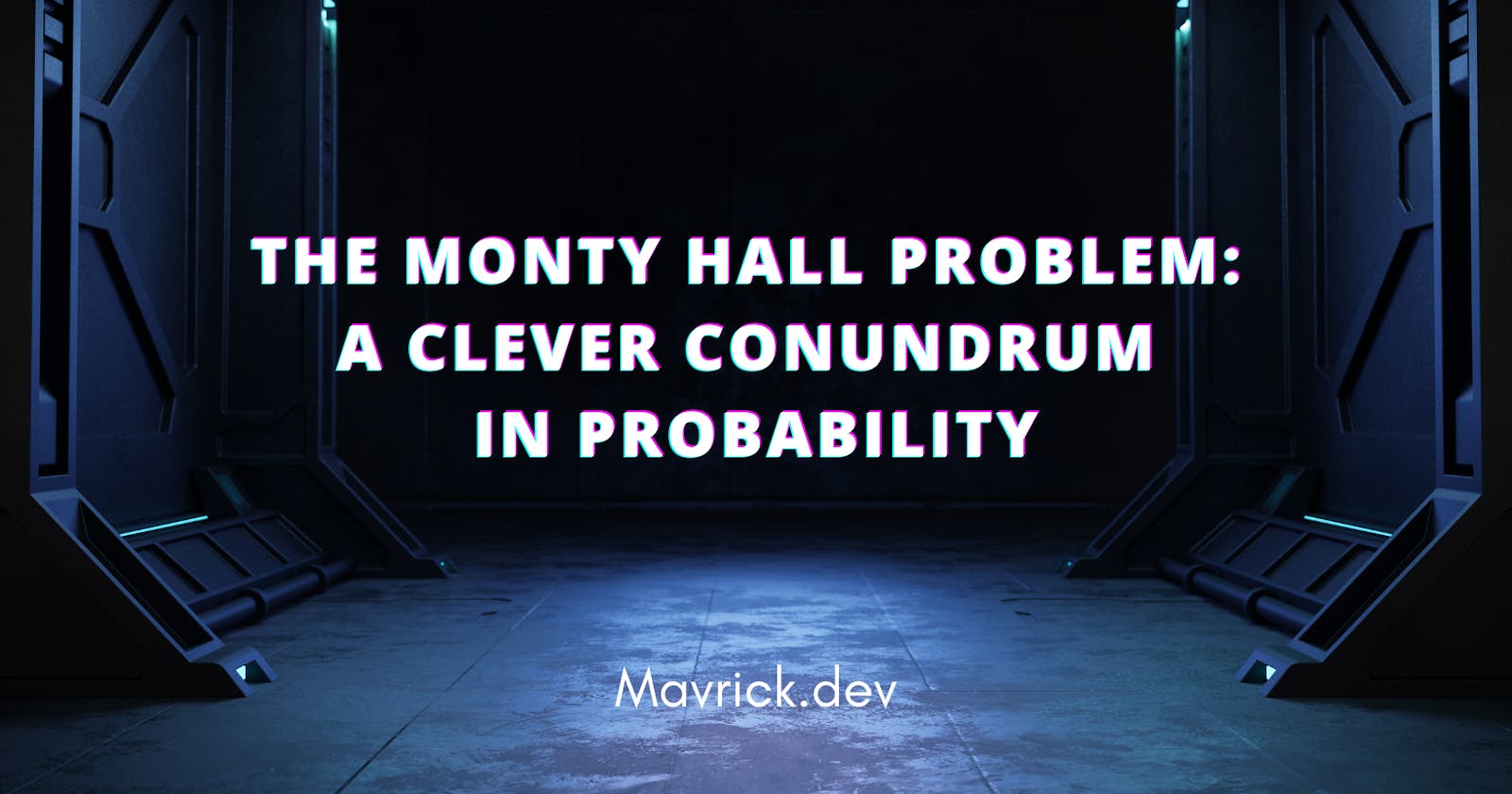Demystifying the Monty Hall Problem: A Clever Conundrum in Probability
Microsoft problem solving assessment interview question (TypeScript)
Hi mavs ! In the fascinating world of probability, the Monty Hall problem stands as a testament to how our intuitions can sometimes mislead us as demonstrated by one of Steve Ballmer's interview. Named after the host of the television game show "Let's Make a Deal," this problem is a brilliant brain teaser that elegantly illustrates some fundamental principles of probability theory.
The Setup
Imagine you're on a game show, and you're presented with three doors. Behind one door is a car, and behind the other two, goats. You pick one door, say Door 1. Now, here's where it gets interesting: Monty Hall, the host, who knows what's behind each door, opens another door, say Door 3, revealing a goat. He then offers you a choice: stick with your original pick or switch to the remaining unopened door, Door 2. What should you do?
The Intuition Trap
At first glance, it might seem that it doesn't matter whether you stick or switch. After all, aren't there just two doors, and therefore a 50-50 chance? However, this is where our intuition can lead us astray. The crux of the Monty Hall problem lies not just in the probabilities, but in how they change after Monty reveals a goat.
Breaking Down the Odds
Let's dissect it. Initially, the probability of the car being behind each door is 1/3. When you pick Door 1, there's a 1/3 chance that the car is there and a 2/3 chance it's behind one of the other two doors. Monty's action of opening a door to reveal a goat changes the probabilities. Crucially, he will always open a door with a goat, which means he is giving you additional information.
The Switch Advantage
After Monty reveals a goat behind Door 3, here's the new breakdown: If the car was behind your initial choice (Door 1), it's still there with a probability of 1/3. However, if the car was behind one of the other doors (which was 2/3 likely), it's now definitely behind Door 2, because Monty has shown that it's not behind Door 3.
By sticking with Door 1, your chance of winning the car remains 1/3. But by switching to Door 2, you have a 2/3 chance. This counterintuitive result is the heart of the Monty Hall problem.
Why It's Hard to Believe
Our brains are wired to think in terms of equal probabilities, especially when presented with two options. The Monty Hall problem defies this instinct by introducing a non-random choice (Monty's revealing of a goat) after the initial random choice. This alters the probabilities in a way that our intuition might not immediately grasp.
enum DoorContent {
Goat,
Car
}
function simulateMontyHall(stickWithOriginalChoice: boolean): boolean {
const doors = [DoorContent.Goat, DoorContent.Goat, DoorContent.Car];
shuffleArray(doors); // Randomize the doors
const chosenDoor = 0; // Contestant chooses the first door
let revealedDoor = revealGoatDoor(doors, chosenDoor);
let finalChoice = stickWithOriginalChoice ? chosenDoor : 3 - chosenDoor - revealedDoor;
return doors[finalChoice] === DoorContent.Car;
}
function shuffleArray(array: any[]) {
for (let i = array.length - 1; i > 0; i--) {
const j = Math.floor(Math.random() * (i + 1));
[array[i], array[j]] = [array[j], array[i]];
}
}
function revealGoatDoor(doors: DoorContent[], chosenDoor: number): number {
const doorsWithGoats = doors.map((content, index) => ({ index, content }))
.filter(door => door.content === DoorContent.Goat && door.index !== chosenDoor);
return doorsWithGoats[Math.floor(Math.random() * doorsWithGoats.length)].index;
}
// Test the simulation
console.log(simulateMontyHall(true)); // Stick with the original choice
console.log(simulateMontyHall(false)); // Switch to the other door
Example 2: Analyzing Probabilities Over Multiple Simulations
This example expands on the first by running multiple simulations to demonstrate the probabilities over time.
function analyzeMontyHall(iterations: number): void {
let stickWins = 0;
let switchWins = 0;
for (let i = 0; i < iterations; i++) {
if (simulateMontyHall(true)) {
stickWins++;
}
if (simulateMontyHall(false)) {
switchWins++;
}
}
console.log(`Sticking with the original choice: ${stickWins / iterations * 100}% win rate`);
console.log(`Switching the choice: ${switchWins / iterations * 100}% win rate`);
}
// Run the analysis
analyzeMontyHall(10000);
The Monty Hall problem is more than a party trick. it's a lesson in probability, decision-making, and the danger of trusting our gut over the math. It teaches us to consider all available information and how it might change the odds. In a world where decisions often have to be made with incomplete information, understanding concepts like this can be incredibly valuable.
Next time you're faced with a seemingly straightforward choice, remember the Monty Hall problem. Sometimes, the best decision defies our initial intuition, and that's a valuable lesson, both in probability and in life.

